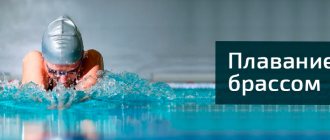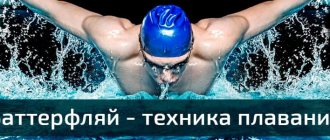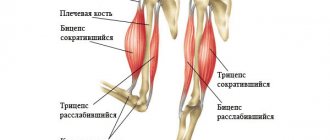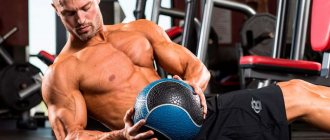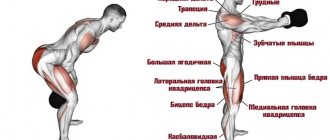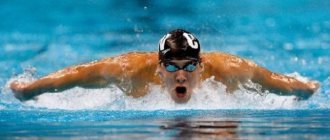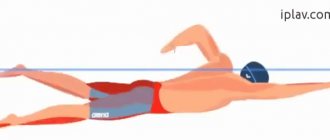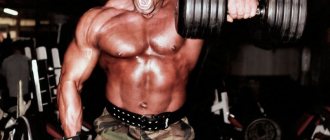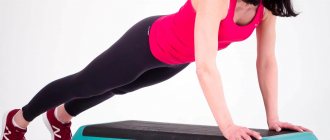Breaststroke is considered the second most difficult technique and is second only to butterfly. To perform all the movements correctly, you will have to learn a lot: choose the most attractive swimming school - European or Western, prepare your lungs for long-term air retention and study the basic technical movements. Below we will analyze the techniques for performing this type of swimming, and also give an example of the mistakes that are most often encountered.
The benefits of swimming using the breaststroke technique
The breaststroke style of swimming is a quiet way of moving through the water. The effect is achieved by keeping the swimmer underwater. Synchronized jerks of arms and legs, as well as breathing, set the pace.
When swimming using the breaststroke technique, 600-700 calories are burned per hour.
The main advantages of breaststroke swimming:
- weight loss;
- cool water hardens the body;
- joint mobility improves;
- no muscle tension;
- the heart rests;
- blood circulation improves from active actions and massage effects of water;
- endurance is acquired;
- water puts resistance on the lungs, which makes breathing more regular and stronger, and shortness of breath decreases;
- Due to the loads, muscle mass increases, and the resistance of the water helps to form a beautiful, defined relief.
Slip
Breaststroke, like other swimming styles, is primarily characterized by the fact that its main element is gliding through the water.
Therefore, after throwing out the arms with a kick, the sliding phase begins - the fully extended body must slide through the water, while:
- the faster you swim, the smaller this phase will be (but it will still be present);
- if you swim in power saving mode, then the glide, on the contrary, will be long.
Regardless of the speed and goals of swimming, during practice, be sure to find and feel this sensation - how your body glides.
Swimming style: breaststroke
Breaststroke is a cycle of specific movements that brings the swimmer's body to maximum acceleration. The technique is used in competitions.
The position of the body during the swim does not remain unchanged. First, the upper part of the body goes under water, when emerging it acquires a more vertical orientation, and when sliding it remains parallel to the water.
Breaststroke swimming technique step by step:
- The swimmer is positioned parallel to the plane of the water. You need to make sure that the body is stretched into a flat plane; the legs or upper body should not sink.
- The brushes go forward. The hands move apart at the same time as you inhale.
- Beginners make the mistake of leaving their palms parallel to the water. To cut through the water and make a technical movement, you need to turn your palms away from you.
- The feet move a little further away from each other. A push is produced that gives acceleration. The movement resembles that of a frog.
The main difference from other techniques is that the hands remain almost completely under water and are not brought up.
Body sliding technique
Your feet should be close to the surface and should be relaxed. The face is turned towards the bottom. Hands cut through the water like an arrow.
Angle Squats
The main task in this exercise is to keep your back straight. You can use doorways, niches in the wall or furniture as corners. The principle of the exercise is as follows: we place our legs parallel to each side of the corner at a distance of 20-30 centimeters from it and simply squat, trying to reach up with the top of our head. You can stretch your arms in front of you, the main thing is that your body does not touch the corner. The exercise must be performed in five approaches. The goal here is not so much the squats, but to get a feel for the footwork and the position of the body.
Hand movement technique
The upper body sets the main pace and helps coordinate the movement of the legs and head. The hands move simultaneously and do not go beyond the surface of the water.
Step by step execution:
- The head remains under water, the swimmer stretches out into a string, the limbs stretch forward, the toes are stretched.
- Then the palms are spread away from the body, turning them outward.
- The arms are bent to make the stroke.
- After the stroke, the palms unfold and extend into a single line with the body.
- The slide lasts several seconds, the position of the hands does not change at this moment.
Initial position
- Straight arms are extended forward, as are the shoulders.
- The body is parallel to the water surface, close to its surface.
- Palms facing down almost touch each other.
- The stomach is pulled in.
- The head is a continuation of the spine, looking down.
Raising arms to the side
It is important to remember that:
- any movements are carried out parallel to the water;
- palms are turned back to the body;
- during the extension, the arms already begin to bend for the stroke;
- movement of the hands should be round and smooth.
Hand stroke
- The rowing movement is carried out towards oneself.
- The arm bends up to 45 degrees relative to the surface of the water.
- During the stroke, the elbow extends 90 degrees, that is, it does not go further than the shoulder.
- As soon as the arm becomes perpendicular to the body, it begins to return to its original position.
- When the stroke is completed, the hands are closed at the chest and the palms are directed towards the chin. The arms are almost at the sides.
Throwing your arms forward
The hands brought together are sharply thrown forward. The body returns to the starting position, straight arms are placed in front of the head, in the same plane with the body.
Returning over water is good for sprints. It is physically more difficult to perform, but it gives greater acceleration. The technique is the same, but the arms are thrown above the water. This overcomes the resistance of the water, which slows down the body.
Returning under the surface of the water slows down the swimmer, but the movement occurs with less resistance.
Leg movement technique
The movement of the legs gives the swimmer high speed.
Step by step execution:
- Legs straight, feet brought together.
- The shins are slightly spread to the sides, the feet are turned outward.
- The feet, turned outward, move smoothly towards the back.
- A sharp blow creates a “spring” that pushes the body out.
- Sliding occurs with straight legs, feet slightly brought together.
Leg pull-up
The legs are pulled towards the back when the arms are at the chest and begin to go to the starting position. During the stroke, the legs are pulled up.
Technique:
- Legs straight, feet together.
- The shins turned outward, with the knees apart, are pulled towards the back.
- Feet remain close to the surface of the water. Before the push, they are moved apart as much as possible.
Leg push
- An angle of 45 degrees is maintained between the shin and thigh.
- Feet point outward.
- The knees are slightly wider than the pelvis, the shins are even wider.
- A sharp blow.
- At the same time, the arms and legs are thrown out.
Breathing while swimming breaststroke
Breathing while swimming breaststroke helps to move quickly and reduces the swimmer's fatigue. The main mistake that causes a violation in the technique is raising the head at the moment when the hands have already returned to the chest. At the moment when the hands just go to the body, you need to immediately raise your head. And when they just returned to the starting position, the head should already be under water.
Important! Incorrect technique will not allow the swimmer to move quickly; the head above the water will slow down the acceleration.
Let's take a breath
Inhale through the mouth, you need to quickly grab as much air as possible. Air intake occurs very quickly, which may be unusual for beginners. Inhale at the beginning of the stroke. When your arms begin to stretch forward to the starting position, you need to remove your head.
Exhale
Exhalation is done through the nose and mouth at the same time. While swimming, it is recommended to exhale all the time until you inhale. Exhalation occurs smoothly through a small crack, with teeth closed.
Interestingly, swimmers develop a reflex that allows them to avoid water getting into their nose. As soon as liquid approaches the face, they begin to exhale air, preventing droplets from entering the mucous membranes.
When you exhale for a long time, it is much easier to take in air when you emerge.
Additional nuances
- If you swim underwater , then you can do strokes like in breaststroke, only do not stop your hands at the shoulder line, but bring them to your hips - this way the stroke will be stronger. In “classical” swimming at competitions, such a movement is allowed to be made once per pool - respectively, after the start or turn.
- If you are competing in speed competitions, you don't have to take a breath every time, but the rule is that your head should still cross the surface of the water during each cycle.
- At the very beginning , you can practice on land on a bench to understand the coordination and synchronization of movements.
- Breaststroke is inferior in speed to crawl, and at short distances it is generally inferior to all other swimming styles.
- At the same time, breaststroke requires less energy than crawl, and especially than butterfly.
- A non-obvious feature: if your goal is to swim as quietly as possible (in terms of loud sounds), then breaststroke is better suited for these purposes.
Swimming style: breaststroke backstroke
Back breaststroke has not been used in sports competitions since the last century; it is more intended for recreation.
For beginner swimmers, it is recommended that before learning the backstroke technique, they first need to practice the front breaststroke technique.
Backstroke breaststroke is a complete analogy of the classic front breaststroke, but inverted. The pushing still occurs with the legs. When doing breaststroke on the back, it can be more difficult to make synchronized movements. However, without achieving manufacturability, it will not be possible to achieve high speeds and sliding.
This style is used for transporting water victims to land. In this position, the victim breathes, and water does not enter the lungs.
Strengthening the cardiovascular system
Swimming also has a good effect on the cardiovascular system. It normalizes metabolism and improves endurance.
Benefits from classes:
- During exercises in the pool, the swimmer is in a horizontal position. In this state, it is easier for the heart to pump out blood.
- When swimming, a person breathes deeply, and the muscles actively work. This allows you to remove stagnation of blood and lymph in the vessels.
- Swimming normalizes blood pressure.
- During swimming, the functioning of the heart improves and the likelihood of premature wear and tear is reduced.
Don't miss the most popular article in the section: Laser hair removal on the face and body - how it is done, effectiveness, before and after photos, contraindications.
Back breaststroke technique
Body position
- The swimmer lies on his back, parallel to the surface of the water.
- The body is elongated in a straight line.
- Legs straight, brought together.
- Arms are straightened, thrown back.
- Palms face up.
- The face remains above the water column. The chin is slightly pressed to the body.
Hand movement
Hands seem to cut through water. The position of your palms helps regulate flow and speed up.
Step by step execution:
- Sliding from the starting position. The body is in the starting position, hands behind the head.
- Rowing Hands with clenched fingers are bent. Hands are moved to the sides, down. During the stroke itself, the palms open. As soon as the hands touch the hips, the stroke is complete.
- Carrying. The hands are moved through the air to the starting position.
Leg movement
The push is performed by sharply straightening the legs.
Technique:
- Starting position. Knees bent.
- Feet are spread shoulder-width apart, heels pointing outward.
- The heels are lowered until they are as close to the pelvis as possible.
- The legs are spread, the feet are turned outward. The legs forcefully return to their starting position. The movement occurs from bottom to top in arcs, and then towards each other.
Correct breathing
Inhalation occurs at the end of the stroke, before the movement begins. Exhale during the stroke itself. Exhale through the mouth and nose, inhale only through the mouth.
Motion synchronization
While swimming:
- inhale after the stroke;
- the push occurs at the same time as the hands are lowered into the water;
- when returning to the starting position, exhale, then slide.
How to swim correctly?
This style is one of the most difficult from a technical point of view. Therefore, before reading the text description, look at how it looks from the outside:
As you can see, the following movements are performed :
- the arms make a stroke and are thrown back forward;
- during the stroke, the head rises above the water and inhales, then lowers and exhales;
- at the moment the arms are thrown out, the legs make a push, similar to the movements of a frog, due to which the body receives additional acceleration and slides until the next stroke.
For a better understanding, we also recommend watching this video (it is in English, but it is not the sound that is important, but the picture):
Now let's look at the technique step by step and in detail.
Swimmers' mistakes when swimming on the front
Strongly pulling the knees towards the chest. Because of this error, the water flow rests against the knee and the speed decreases. Correctly pull your heel towards your butt.
Unchanged body position. At the beginning of the breaststroke, the upper part of the body goes under the water a little deeper, during the surface it rises slightly above the water, and during the slide it remains parallel to the water.
Quick leg lift. To push off strongly and give your body good acceleration, you need to smoothly pull your legs towards you and then push off sharply. During quick pull-ups and sharp pushes, the legs do not accelerate, but only become exhausted.
Lack of symmetry in movements. If the legs move asymmetrically, the pelvis and back will be distorted, pain will appear, and speed will decrease.
Incorrect kick. The push occurs with the L-shaped foot, as if it is turned outward. Many people make the mistake of using the freestyle push method.
Lack of legs. After a technical push, the legs are straightened and brought together, the feet are connected. If this does not happen, the acceleration will disappear.
Useful tips for beginner swimmers
It may seem that when doing breaststroke on the back, water does not get into the nose, because the head remains on the surface. However, splashing water easily blocks breathing. Beginning swimmers need to develop a reflex - to exhale when entering or immersing in water.
You don’t need to make any special efforts to raise your head above the water or “nod” it. This happens naturally when the upper body comes up to take in air. You can change the concept of “raise” your head in your head to “look forward.”
While swimming, you need to constantly monitor not only your technique, but also your body position. It should be as close as possible to the surface of the water and located parallel to its surface.
